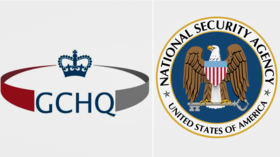New law allows for warrantless spying on Australians – where next?

The Australian Signals Directorate, Canberra’s equivalent of Britain’s GCHQ or the US National Security Agency, will be granted sweeping new powers to spy on Australians for the first time since its November 1947 founding.
The move allows the agency to collect signals intelligence on individuals within the country without a warrant, although allegedly only in situations where there is an “imminent risk to life.” Domestic terror suspects are cited as a key target in the Directorate’s crosshairs, and it will also collect intelligence in conjunction with the Australian Defence Force for military operations, with ministerial authorization.
Rules governing the reform and protecting citizens’ privacy will be published on the agency’s website, and subject to review and scrutiny by the Australian parliament’s security and intelligence committee. While framed as sincerely concerned with keeping Australians safe, experts have expressed grave reservations about the development. Among them is John Blaxland, Professor of International Security and Intelligence Studies at the Australian National University, himself a military intelligence veteran, who warned the powers were ripe for abuse.
“I’m a former insider…I have a much greater appreciation of the need for checks and balances, because power tends to corrupt,” he cautioned. “My concern is the legislation we put forward is being drafted by insiders, it’s drafted with their own concerns in mind.”
Drafted by insiders, the legislation certainly was – it’s inspired by the findings of an extensive review by Dennis Richardson, former chief of Australian Security Intelligence Organisation, the country’s FBI, conducted in close consultation with Australia’s assorted intelligence services, in a manner akin to foxes being quizzed on how best to guard a henhouse.
Published in December 2020, his appraisal’s discussion of “authorisations” noted that these agencies can already conduct warrantless intelligence-gathering if they believe it to be “necessary, proportionate, reasonable and justified” in certain circumstances, and “would like the ability” to not only use various investigative techniques without official permission, but also with “protection from criminal liability” when doing so.
Leaked documents exposed by journalist Annika Smethurst in April 2018 showed that high-level plans for untrammeled domestic spying by the Australian Signals Directorate date back even further. They revealed how the respective heads of Australia’s Defence and Home Affairs ministries had discussed allowing the agency to access citizens’ emails, bank records and text messages without approval, or trace. A government source told Smethurst they were “horrified” by the proposals, given “there is no actual national security gap this is aiming to fill.”
Australian Federal Police raided both the alleged leaker of the files and Smethurst the next year. In a perverse irony, the charges against her were dropped in May 2020, as Australian High Court judges unanimously ruled that the warrant secured from a magistrate in relation to the raid was invalid, because it not only “misstated the terms of the offence” but was also ambiguous if not outright absurd.
“[The warrant] lacked the clarity required to fulfil its basic purposes of adequately informing Smethurst why the search was being conducted and providing the executing officer and those assisting in the execution of the warrant with reasonable guidance to decide which things came within the scope of the warrant,” the High Court damningly concluded.
In other words, it was impossible to know from the warrant’s wording what the investigation actually concerned, what evidence or information was sought, and what, if any, crime she may or may not have committed. That this baseless and broad investigative authorization was formally granted at all renders the Directorate’s newfound power to conduct warrantless surveillance all the more disquieting. If such procedural perversion can occur even with putative oversight, what abuses will be engaged-in without any meaningful supervision?
Misuse of these capabilities is almost inevitable. In 1973, the US Supreme Court ruled warrants were mandatory for domestic intelligence gathering. Two years later, a Senate investigation found that the NSA and other US intelligence agencies had nonetheless been engaged in unauthorized spying on American citizens, including anti-war protesters, civil rights activists, and political dissidents, monitoring all their private communications from telephone conversations to telegrams. This led to the 1978 Foreign Intelligence Surveillance Act, which made it a dedicated criminal offense to eavesdrop on American citizens without judicial oversight.
Yet,it was revealed in late 2005 that the NSA had all along continued illegally intercepting the phone calls and digital communications of US citizens, with the witting help of major telecoms giants, which passed copies of all emails, web browsing and other internet traffic to and from its customers at home and abroad to the agency, and its British counterpart GCHQ. Files disclosed in 2013 by whistleblower Edward Snowden confirmed this criminal dragnet was truly global in scale, and very much ongoing.
Key components of this international spying network, known as ‘Five Eyes,’ are situated in Australia, at the Pine Gap and Kojarena satellite surveillance bases. According to investigative legend Duncan Campbell, around 80% of the messages intercepted by the latter – which employs US and British staff in key posts – are sent automatically to GCHQ and the NSA. While every Five Eyes member can theoretically veto requests for such material, “when you’re a junior ally” like Canberra, “you never refuse,” Campbell records.
One can’t help but wonder if the Directorate’s new domestic purview is an experiment, gauging levels of backlash and controversy among the Australian public, before similar measures – provably or potentially already in operation – are openly codified across all Five Eyes member states. Ongoing legal battles against mass data collection in various jurisdictions clearly necessitate the practice being legalized and legitimized. If Canberra’s American and/or British friends politely requested they run such a pilot scheme, would or even could they decline?
Reinforcing this interpretation, mere days after the Directorate’s remit was expanded, the Australian government pledged to introduce new laws forcing social media giants to “unmask” anonymous users who post offensive comments, with hefty fines doled out to those companies which are unwilling or unable to do so. The reasons for Canberra’s haste are unclear, although it’s surely no coincidence that London and Washington have battled for many years to end online anonymity for good – it’s only due to intense domestic opposition that these efforts have so far failed.
The statements, views and opinions expressed in this column are solely those of the author and do not necessarily represent those of RT.















